Want to Know Your Worth? Define and differentiate.
How much should I charge?
Every business owner stares down this dark-night-of-the-business-soul question at some point.
Perhaps you’ve fretted over a proposal, procrastinating hitting that send button. Will this sink the deal? You hastily mark it down a bit. But you know you’re short-changing yourself.
Or maybe you’ve hang-wrung over the price of a new product. Should you match your competitors? Or better yet, take the penny-less approach? They charge $100, so why not charge $99.99. Welcome to the road of being truly penniless.
At the root, most insipid pricing models have little to do with facts and a whole lot to do with fear. Business FOMO is infectious, often feeding on itself, and almost always resulting in a race to the bottom.
If you’re competing solely on price, your fear is probably valid. That’s why you need to tap into a secret weapon that most small business owners completely ignore: your brand.
Dan Kennedy says, “The buying decision has very little to do with objectively measured intrinsic value. If that were the case, diamonds would not cost any more than glass or coal. You can control and manipulate all the non-intrinsic factors. So you should approach price courageously and creatively.”
Your brand represents a lot of your “non-intrinsic factors,” and when approached “courageously and creatively” you can dominate your market.
Take Dollar Shave Club as an example. In 2011, the company was just an idea looking for venture capital. In a nutshell, the pitch was this: Sell cheap razors on a subscription basis. Michael took this pitch to start-up studio, Science Inc.’s CEO Michael Jones.
Writing for CNBC, Jones had this to say about the initial pitch:
“While the business model was promising, I wasn't wholly persuaded by the profit margins on the just-a-few-bucks-per-razor concept. Michael, however, being a visionary who also happens to have a great sense of humor, showed me a rough cut of the video he produced that was intended to amplify attention around the company's launch by discussing Dollar Shave Club's mission. After viewing the video, I knew that Science Inc. needed to come on board and back the brand that was stirring up the pricey men's grooming marketplace.”
Jones invested a modest $100,000, and two years later in 2014 Dollar Shave Club was destroying the low-end competition with $65 million in sales. In 2016, the Unilever bought the brand for $1 billion.
That’s a hell of a ROI.
Why did Jones do it?
He recognized that Dollar Shave Club’s CEO Michael Dubin knew how “to think outside the bubble”
“Michael is a branding ace and bold in his marketing approach…,” writes Jones. ”By providing quality products with highly entertaining content, DSC was able to continuously grow its customer base at a rate faster than most e-commerce companies.”
Essentially, What Dubin did for Dollar Shave Club was make them what branding guru Marty Neumeier calls the “only”.
“Brands need strong positioning because customers have choices—if you don’t stand out, you lose,” says Neumeier. “…to win the positioning game, you have to answer one simple question: What makes you the ‘only’?”
To help his clients get to the heart of what makes them the “only”, Neumeier uses this simple formula: “Our brand is the only —— that ——.
As Neumeier writes, “This simple test isn’t the only way to find a powerful position in the market, but no matter how you get there, if you can’t say why your brand is both different and compelling in a few words, don’t fix your positioning statement…fix your company.”
Looking at Dollar Shave Club, it’s easy to see how they differentiated themselves in the crowded men’s care market. It might go something like this: “Our brand is the only razor that combines both affordability and authenticity.”
Dubin says as much in an interview with Marketing Land, “For so long, for a lot of the spaces talking to men, it was like you had to chose—you were either going to be very highbrow, slightly unapproachable, extremely aspirational, but really, largely unattainable as a brand—or you were going to approach men as Neanderthals. I think those tones, as our brand I think proves, don’t really work.
The way to reach guys nowadays, and to have that authentic feel, is to be relatable, allow guys to put themselves in your shoes as a brand, as opposed to talking at them or talking above them.”
Lest you think Dubin can get away with this because he sells cheap razors, think again. Any guy can buy essentially the same quality double-blade razor from Gilette (or a similar monolythic brand) for $2 a five pack (think the old blue handle). Dollar Shave Club’s double-blade goes for $1 a piece—more that twice the price of the competition. Plain and simple, people are paying for brand.
At the end of the day, the most successful companies focus less on pricing at the commodity level and more on pricing as an output and reflection of their brand. And it starts with understanding your “only”. Get that figured out and you can charge what you want while destroying the competition.
Sources:
[http://marketingland.com/cmos-view-adam-weber-dollar-shave-club-video-marketing-184234]
[https://gkic.com/blog/pricing-strategy/pricing-%E2%80%92-its-more-flexible-than-you-think/]
Sign up for my newsletter
Sign up with your email address to get infrequent dispatches. I promise they’ll be good though.
